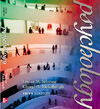|
 |  Psychology, 5/e Lester M. Sdorow,
Arcadia University
Cheryl A. Rickabaugh,
University of Redlands
Behavioral Neuroscience
Chapter Outline- Heredity and Behavior
- Evolutionary Psychology
- Anatomy of a Research Study
- Rationale
- Method
- Results and Discussion
- Behavioral Genetics
- Family Studies
- Adoption Studies
- Studies of Identical Twins Reared Apart
- Staying on Track: Heredity and Behavior
- II. Communication Systems
- The Nervous System
- The Central Nervous System
- 2. The Peripheral Nervous System
- 3. Staying on Track: The Nervous System
- The Endocrine System
- The Pituitary Gland
- Other Endocrine Glands
- Staying on Track: The Endocrine System
- The Neuron
- The Neural Impulse
- The Resting Potential
- The Action Potential
- Synaptic Transmission
- Mechanisms of Synaptic Transmission
- Neurotransmitters and Drug Effects
- Endorphins
- Staying on Track: The Neuron
- The Brain
- Techniques for Studying the Brain
- Clinical Case Studies
- Thinking Critically About Psychology and the Media: What Can We Infer From the Size of the Brain?
(1.) The Misguided Science of Phrenology
(2.) The Furor Over Einstein’s Brain
- Experimental Manipulation
- Recording Electrical Activity
- Brain-Imaging Techniques
- Functions of the Brain
- The Brain Stem
- The Medulla
- The Pons
- The Cerebellum
- The Reticular Formation
- The Thalamus
- The Limbic System
- The Hypothalamus
- The Amygdala
- The Hippacampus
- The Cerebral Cortex
- Motor Areas
- Sensory Areas
- Association Areas
- Language Areas
- Cerebral Hemispheric Specialization
- Evidence of Hemispheric Specialization from the Damaged Brain
- Evidence of Hemispheric Specialization from the Intact Brain
- Evidence of Hemispheric Specialization from the Split Brain
- Staying on Track: The Brain
|
|
|



 2002 McGraw-Hill Higher Education
2002 McGraw-Hill Higher Education

 2002 McGraw-Hill Higher Education
2002 McGraw-Hill Higher Education